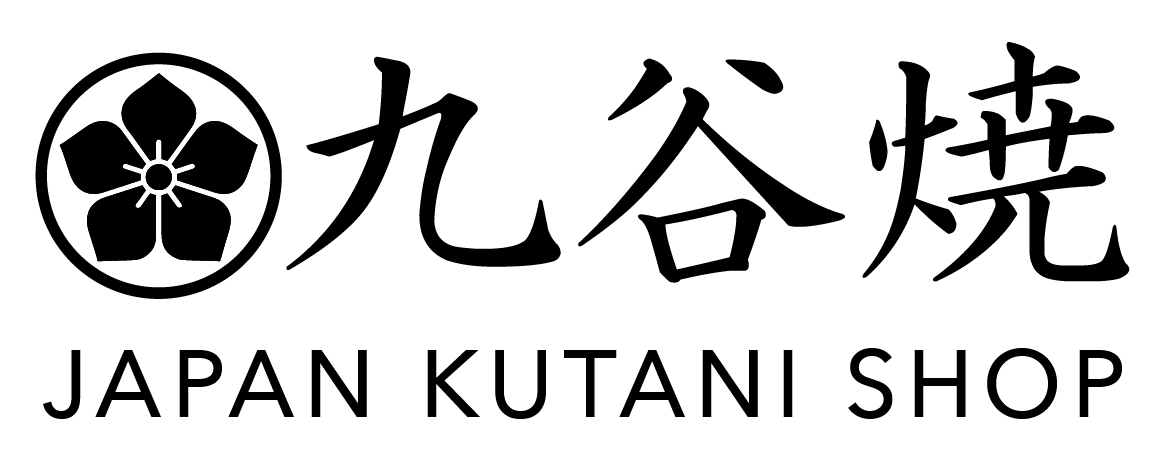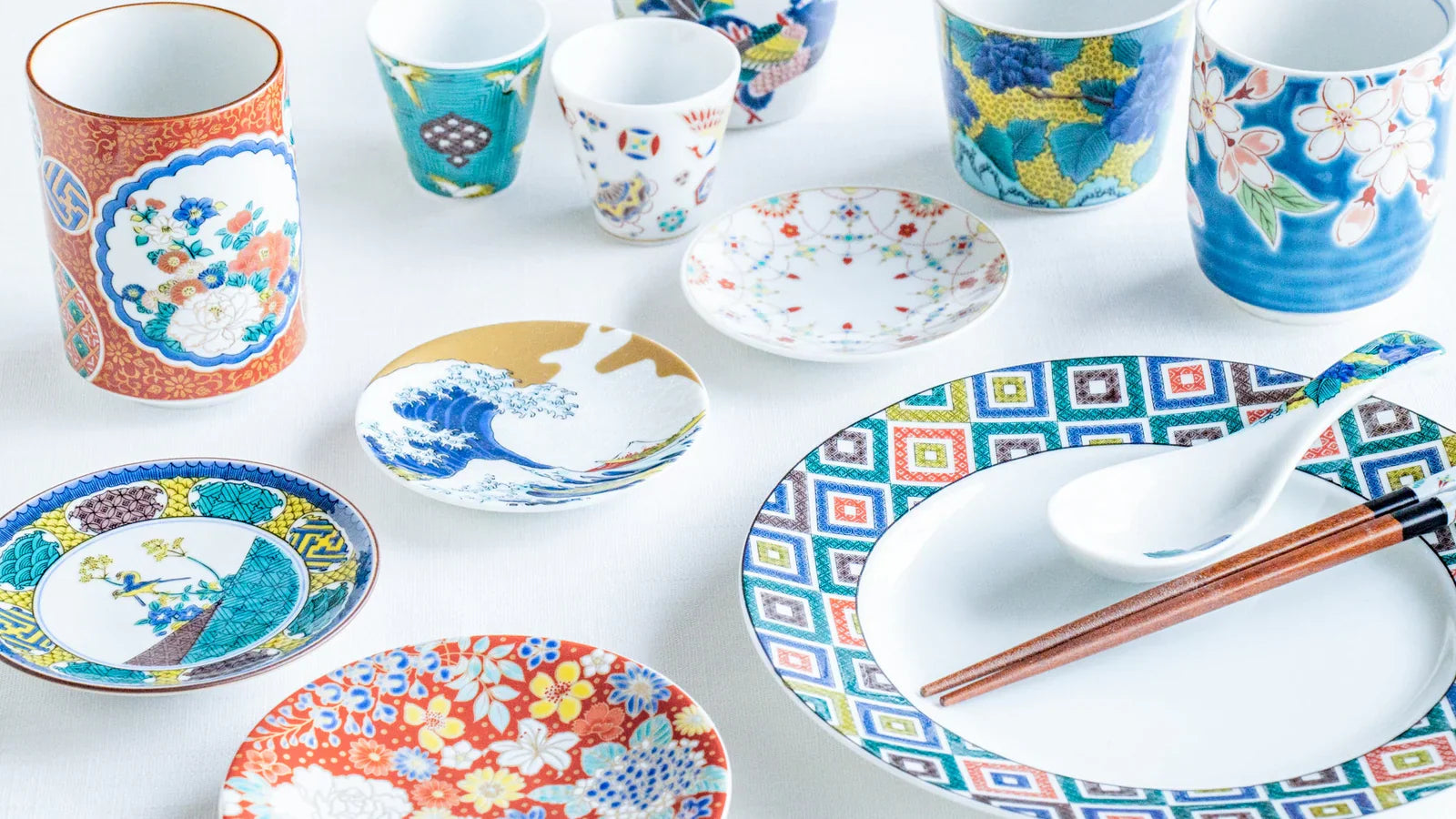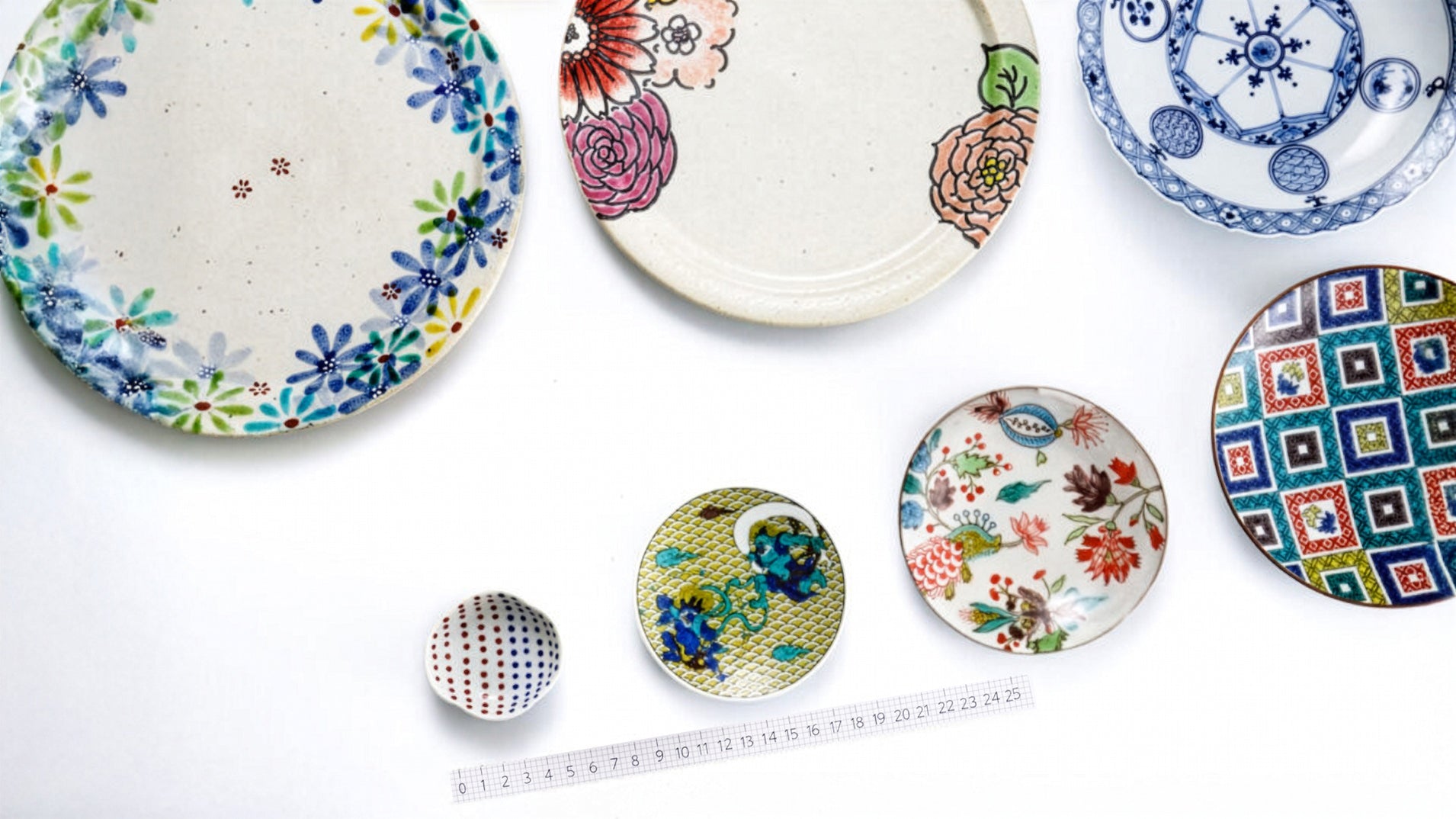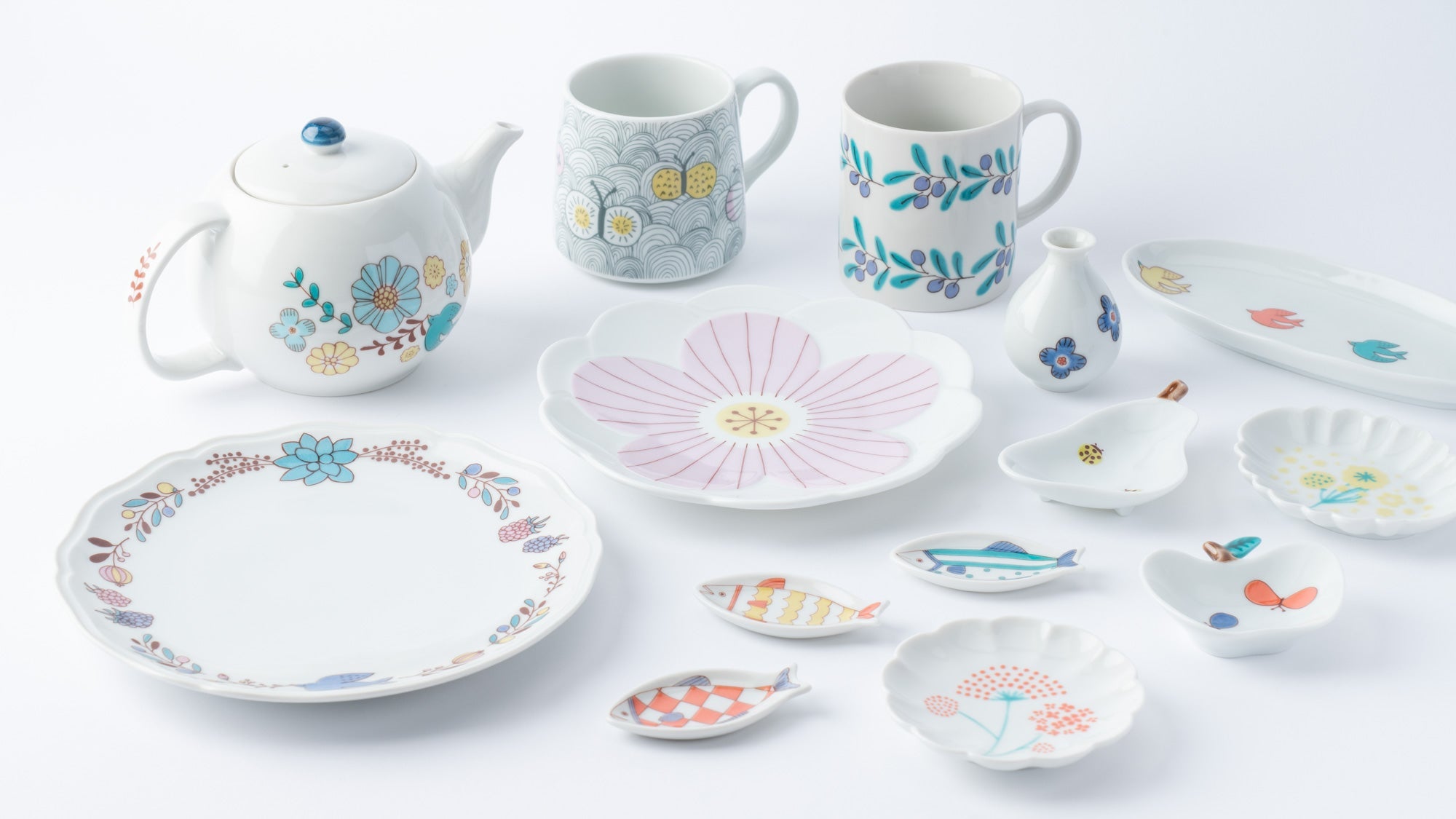
Styles and Techniques of Kutani Ware
Written by Team Japan Kutani
Kutani ware encompasses a wide variety of styles and techniques—from the colorful gosaide that began with ko-Kutani to the popular fine red line technique akae-saibyo, and the works of distinguished modern masters. The sheer breadth and depth of Kutani ware are truly astonishing. Here are some of the main techniques and styles that define Kutani ware.
TABLE OF CONTENTS
Gosaide

For many, the image of Kutani ware is closely tied to the colorful gosaide style. Resembling a traditional Japanese painting, this style utilizes negative space to accentuate motifs such as flowers, birds, and seasonal landscapes, all rendered in the five classic Kutani colors: green, yellow, purple, navy blue, and red. First seen in the era of ko-Kutani, gosaide remains one of the most iconic and beloved expressions of Kutani ware today. Its bold presence continues to define what people imagine when they think of Kutani. Though it’s a long-standing tradition, that is exactly what makes it so appealing and fresh. A gosaide piece in a modern setting is simply stylish.
Akae-saibyo

Akae-saibyo is a technique for painting intricate red designs using an extremely fine brush to draw delicate, precise lines. Patterns composed of countless strokes arranged in uniform formations demonstrate an extraordinary level of craftsmanship. By layering lines and dots, artists can express shading, depth, and dimension.
During the Meiji era (1868–1912 CE), “Japan Kutani” gained international recognition. One of the forces behind this boom was the emergence of akae kinrande—a fusion of akae-saibyo with kinrande, a luxurious technique that decorates red-painted surfaces with gold. Akae-saibyo captivated not only Japan but the rest of the world, and this exquisite technique continues to thrive. Master artisans such as Fukushima Buzan, along with many talented younger artists, continue to create stunning works in this style.
Sometsuke

Sometsuke are pieces decorated solely with cobalt blue pigment on a white porcelain base. Unlike vividly colored pieces, sometsuke items offer a more subtle, refined beauty. By definition, sometsuke refers to the underglaze process in the production of colored ceramic ware. Patterns and motifs are drawn directly onto the bisque-fired surface using a pigment called gosu, then covered with glaze and fired, skipping the usual overglaze to complete the sometsuke piece. Drawing clean lines with gosu on a coarse surface of the bisque vessel is difficult and requires a high level of precision and skill. This is why sometsuke pieces featuring only gosu-painted motifs such as flowers, birds, or landscapes often leave a lasting impression through their craftsmanship alone. The quiet elegance, achieved without a spectrum of colors, captivates the viewer.
Saiyu

The glossy surface of colored porcelain comes from the glaze applied to the bisque vessel. When fired, the glaze transforms into a glass-like layer that produces a lustrous shine. The technique saiyu involves mixing colored glazes and carefully applying them to the surface in varying intensities or layers to create gradations of sheen and color. Rather than painting designs, these works rely on the expressive potential of the glaze itself. The appearance of the piece changes depending on how the light reflects off it, and the sheen of the jewel-like surface evokes the feeling of a miniature galaxy within the piece, captivating the viewer. Third-generation Tokuda Yasokichi was designated a Living National Treasure for his mastery of saiyu porcelain.
Aochibu

Aochibu, a decorative technique believed to have gained popularity during the Taisho era (1912–1926 CE), involves layering tiny raised green dots over a colored base. Neither painted nor drawn with lines, these delicate clusters of dots create a mesmerizing, ripple-like effect. Creating evenly sized dots while maintaining the overall beauty of the composition requires extraordinary skill. The smaller the dots, the more admirable the artisan’s precision becomes. While green dots are the most common, variations using white or gold also exist.
Yuri Kinsai

Yuri kinsai is a technique in which gold leaf, cut into decorative motifs such as flowers or leaves, is applied to the ceramic surface, then coated with a transparent glaze and fired. The combination of the glaze’s glossy texture and the shimmering brilliance of the gold leaf is truly beautiful. Gold leaf is an extremely thin and delicate material, making it difficult to work with. The fact that artisans are able to shape and express such intricate forms using this fragile medium alone speaks to their refined skill. This technique was originally conceived by Takenaka Ariatsu of Kanazawa. Yoshita Minori, who further studied and developed the method, was later designated a Living National Treasure for his achievements.
Yuri Ginsai

The yuri ginsai technique is characterized by the application of silver foil, cut into intricate shapes such as flowers or leaves, onto a ceramic piece, then coated with a transparent or colored glaze before firing. Unlike gold, which shines boldly and commands attention as the focal point of a piece, silver has a more subdued shimmer that exudes subtle elegance. Its gentle presence allows it to harmonize beautifully with colored glazes, creating a finish that is both refined and sophisticated. Normally, silver oxidizes and darkens over time, but the glaze prevents oxidation, allowing the silver’s luster to be enjoyed for years to come. Yuri ginsai was established as a technique by Nakada Kazuo.
Mohitsu Saiji

This technique features flowing passages of classical Japanese literature, such as poems from the Kokin Wakashu, written onto ceramics using an ultra-fine brush. It was developed in the late Meiji era (1868–1912 CE) by Oda Seizan and has been passed down as a closely guarded family technique. Today works by the fourth-generation successor, Tamura Seito, remain consistently popular. Unlike the pictorial designs typically associated with Kutani ware, this technique showcases the beauty of written characters as a design. The striking individuality of this style sets it apart. The characters, aligned with clarity yet full of movement, are almost soothing to behold. Even when magnified, one is struck by the elegance of true brush calligraphy.
Ceramic Sculptures

Ceramic sculpting is a technique for shaping figures—such as people, Buddhas, animals, and auspicious motifs—using ceramic materials that began from the Meiji period onwards (1868–1912 CE). A leading contemporary master of ceramic sculpture in Kutani ware is Miyamoto Naoki.
The production process includes sculpting the original form in clay, creating plaster molds for each part, pressing clay into the molds to form the individual components, assembling them into the final shape, bisque firing, the final firing, and then overglaze decorations to complete the piece. The facial expressions and poses are strongly influenced by the artist’s sculpting technique and style. Viewers can appreciate both the finely detailed forms and rich hues that are distinctive to Kutani ware.
Hanazume

The hanazume technique involves painting the surface with densely packed floral motifs, firing the piece, then outlining each flower in gold before firing it again to complete the work. This technique is believed to have been introduced during the Taisho period (1912–1926 CE) by Mizuta Shiro. The lush colors and the brilliance of gold detailing come together to create a truly luxurious and splendid aesthetic.
Kutani ware continues to delight collectors and enthusiasts through its diverse styles and techniques used by different artists and kilns. Exploring the unique creators behind these works can be a rewarding experience.





Leave a comment
This site is protected by hCaptcha and the hCaptcha Privacy Policy and Terms of Service apply.